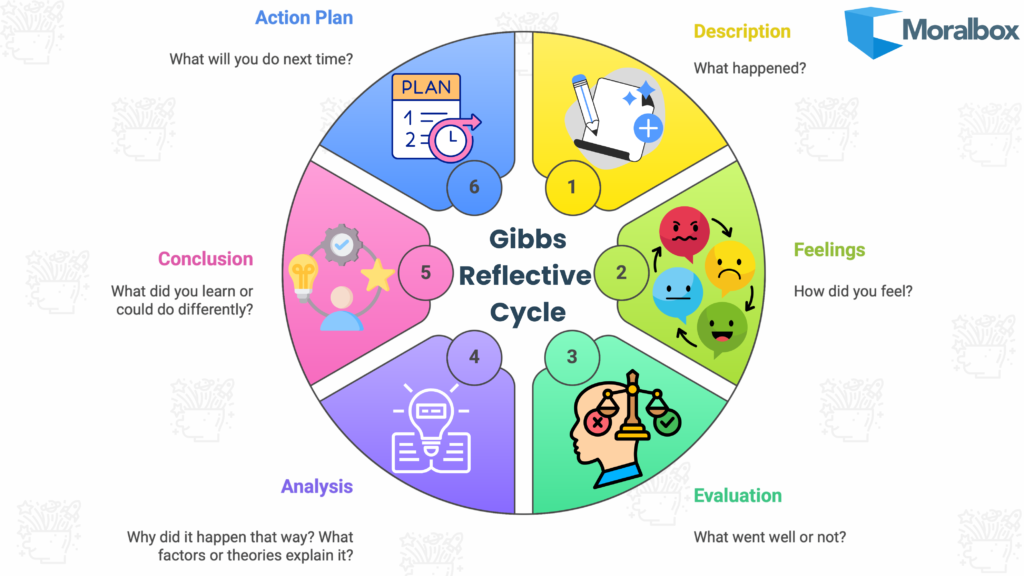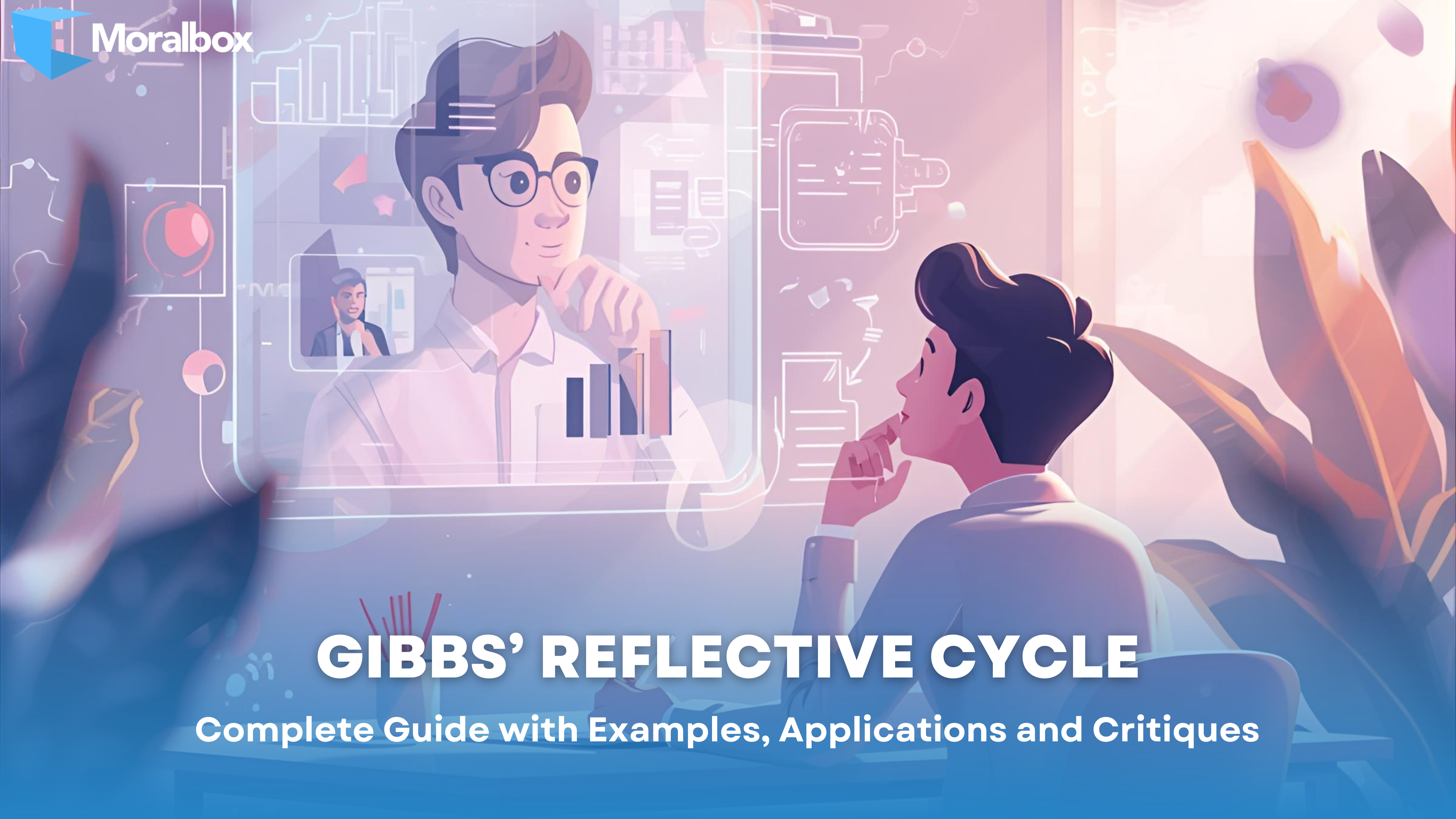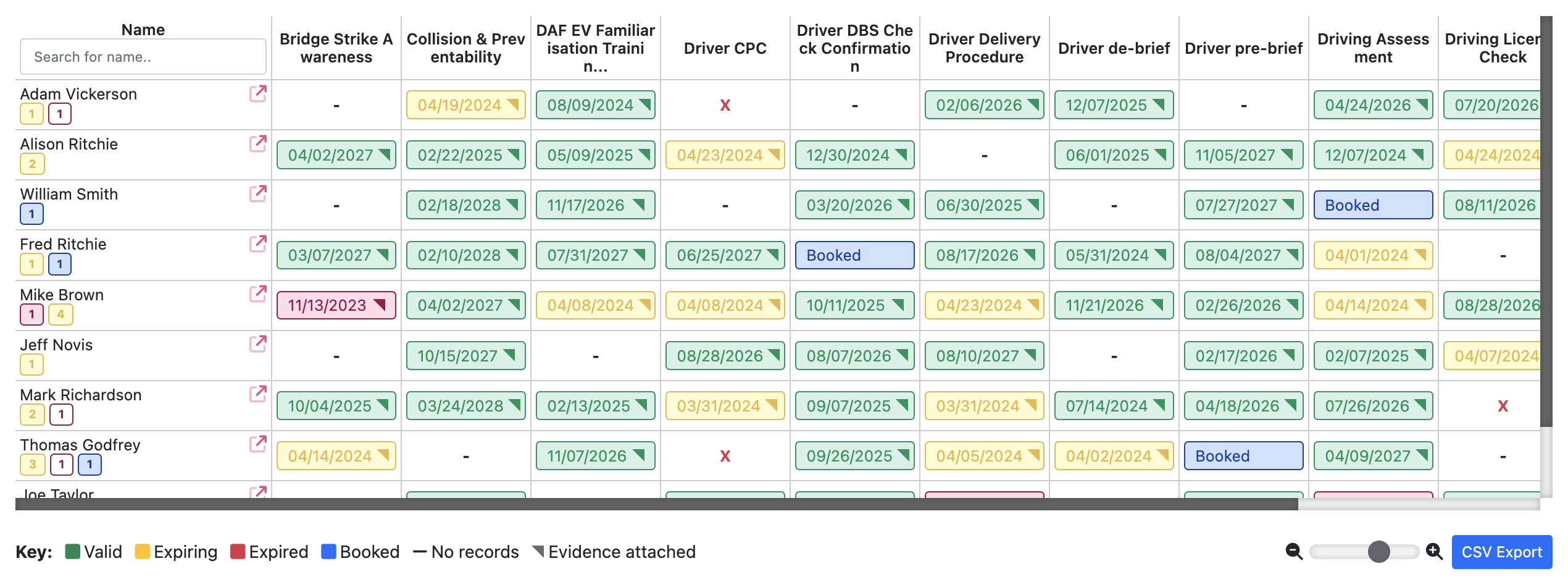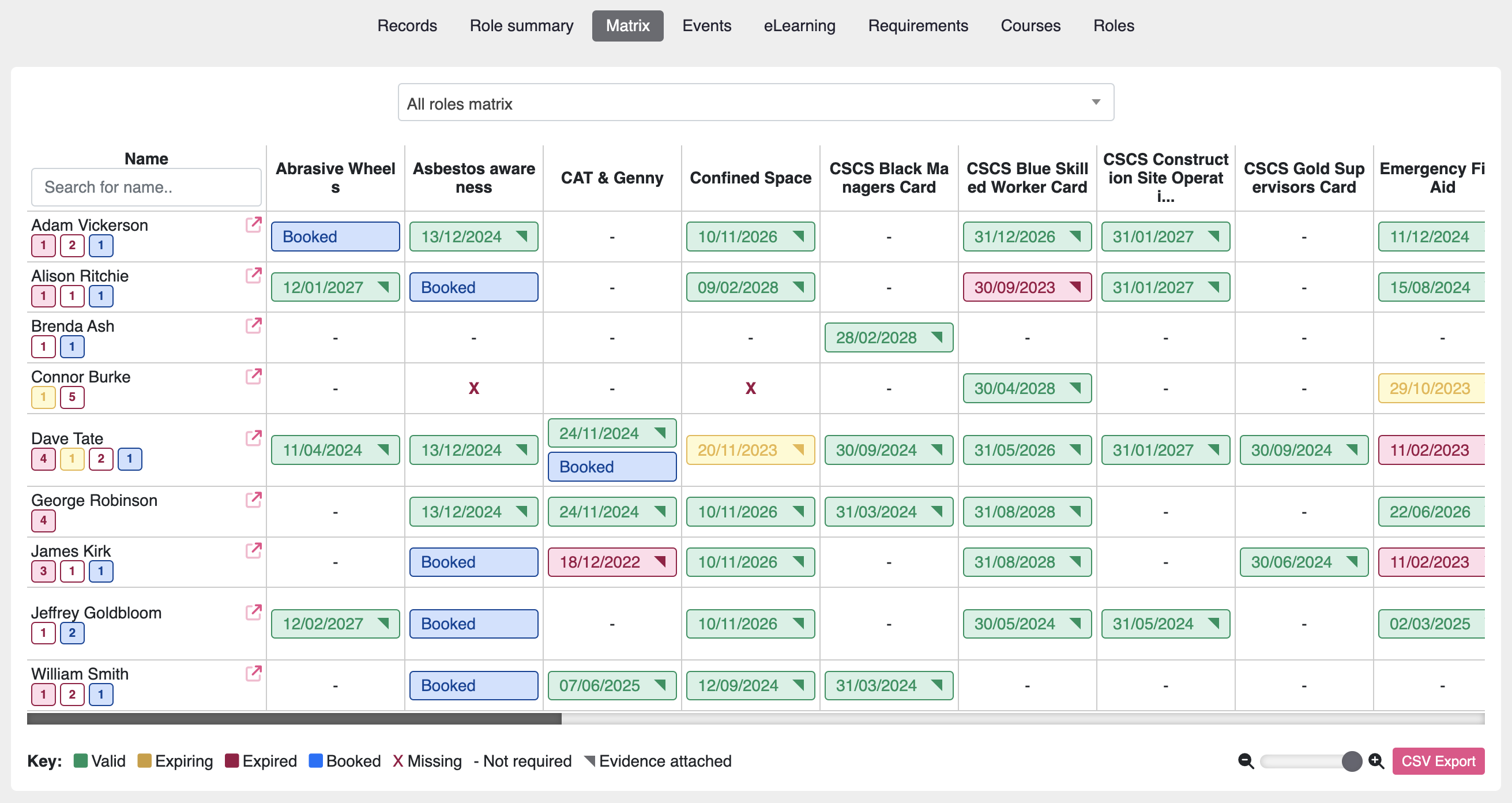Introduction: Why reflection matters more than ever
You have just finished running a workplace training programme. The attendance was high, the materials were polished, and therefore, everything seemed successful. However, within a week, feedback begins to pour in. Participants enjoyed the sessions but struggled to apply what they learned. Then, you start to wonder, “What went wrong, and how can I make this better next time?” This is where Gibbs’ reflective cycle can be incredibly useful.
This is exactly the kind of situation where reflection becomes essential. Reflection helps professionals move beyond frustration or success to examine the why behind experiences. However, unstructured reflection often drifts into vague thinking. In order to be truly effective, it needs structure, purpose, and action.
Therefore, Gibbs’ Reflective Cycle provides that structure. Similarly, it guides you step by step through analysing an experience, drawing conclusions, and planning improvements. Originally introduced by Graham Gibbs in 1988, it remains one of the most widely used models for learning from practice across education, healthcare, and also in professional development (Gibbs, 1988; The University of Edinburgh, 2024).
Table of Contents
- Introduction: Why reflection matters more than ever
- What is Gibbs’ Reflective Cycle?
- The six stages of Gibbs’ Reflective Cycle
- Example: Using Gibbs’ Reflective Cycle in a workplace setting
- Applications across sectors
- Strengths of Gibbs’ Reflective Cycle
- Limitations and criticisms
- Comparison of Gibbs’ Reflective Cycle with Other Reflection Models
- Tips for writing high-quality Gibbs’ reflections
- Conclusion: Is Gibbs’ Reflective Cycle Actually Useful?
- FAQs
- References
What is Gibbs’ Reflective Cycle?
Gibbs’ Reflective Cycle is a six-stage model for analysing experiences and planning change. It consists of:
- Description – What happened?
- Feelings – What were you thinking and feeling?
- Evaluation – What was good and bad about the experience?
- Analysis – What sense can you make of the situation?
- Conclusion – What else could you have done?
- Action Plan – If it happened again, what would you do?
The model builds on Kolb’s Experiential Learning Theory (Kolb, 1984), but adds greater focus on emotions and practical action. Because of this, it is often used in nursing, teacher education, management training, and other settings where learning from real-world experience is vital (Gibbs, 1988; York St John University, 2023).
Moreover, Gibbs’ model is cyclical, which means the final stage naturally leads back to new experiences. Reflection is therefore continuous, not a one-time exercise (University of Cumbria, 2023).
👉 Related Reading: Explore Honey and Mumford’s Learning Styles, a practical model showing how people prefer to learn. It complements Gibbs’ cycle by highlighting different approaches to processing experience.
The six stages of Gibbs’ Reflective Cycle
1. Description
At this stage, the goal is to record what actually happened. Avoid jumping to conclusions or including opinions. Focus only on key facts, sequence of events, people involved, as well as the context (York St John University, 2023).
Example questions:
- What happened and when?
- Who was involved?
- What was the outcome?
2. Feelings
This stage encourages recognition of emotional and cognitive reactions, which influence decision-making. In addition, it allows you to consider how emotions affected your behaviour and the outcomes (University of Cumbria, 2023).
Example questions:
- How did you feel before, during, and after the event?
- How might others have felt?
- What do those feelings reveal about your values or assumptions?
3. Evaluation
Here, you assess the experience by identifying what went well and what did not. It is essential to strike a balance and recognising both strengths and weaknesses helps prevent one-sided reflections (York St John University, 2023).
Example questions:
- What worked and why?
- What was less effective?
- What role did I play in the outcome?
4. Analysis
This is the most critical stage. At this point, you move beyond description to understand why things happened. Consequently, it involves linking theory to practice and identifying patterns or underlying causes (Finlay, 2008).
Example questions:
- Why did events unfold this way?
- What theories or principles can explain what happened?
- Were any assumptions or contextual factors influencing the outcome?
5. Conclusion
At this stage, you summarise what you have learned. In doing so, you may uncover new insights about your skills, understanding of others, or organisational factors (The University of Edinburgh, 2024).
Example questions:
- What did I learn from this?
- How will this influence future practice?
- What could have been done differently?
6. Action Plan
Finally, you outline specific steps for improvement. This final stage turns reflection into action. Without this stage, reflection risks staying theoretical (Gibbs, 1988).
Example questions:
- What will I do differently next time?
- What support or resources do I need?
- How will I measure improvement?

Example: Using Gibbs’ Reflective Cycle in a workplace setting
Scenario:
You led a software training module for a new product feature. The session went smoothly, and participants were engaged. However, one week later, error reports began to increase, and users were misapplying the feature.
Description:
The training used slide-based tutorials and Q&A sessions. 90% of staff attended. Nevertheless, within days, several technical mistakes appeared in user submissions.
Feelings:
Initially, you felt confident and pleased with the high attendance. Later, you felt frustrated and worried that your credibility might be called into question.
Evaluation:
Positive aspects included strong engagement and good communication. On the other hand, negatives were limited to hands-on practice and inadequate examples of complex use cases.
Analysis:
The training followed a theoretical rather than a practical structure. According to cognitive load theory, presenting too much abstract information without practice can overwhelm learners (Sweller, 2011). In this case, participants did not get enough guided practice to apply the skill confidently.
Conclusion:
Therefore, future sessions need more interactive tasks and examples of real-world applications. The analysis revealed that the training was effective at introducing concepts but insufficient for transferring learning.
Action Plan:
- Add short practice activities and simulations.
- Include peer review sessions to reinforce learning.
- Gather feedback after one week to monitor understanding.
- Adjust the module sequence before the next launch.
Want to apply Gibbs’ model to your own experience?
Download this Free Editable Gibbs’ Reflective Cycle Template to structure your reflection step by step.
Applications across sectors
Gibbs’ cycle is widely used in higher education to support reflective essays, portfolios, and also, practice-based learning. Also, research shows that using structured reflection frameworks improves students’ metacognitive awareness and ability to link theory to experience (Moon, 2013).
A 2025 study found that narrative writing based on Gibbs’ model significantly improved empathy and communication among nursing students (Ahmadpour et al., 2025). Thus, these results demonstrate how structured models promote deeper, evidence-informed reflection.
In clinical settings, Gibbs’ cycle is often used during post-shift debriefs and supervision. It also helps practitioners analyse decisions and emotions after high-stress events, supporting emotional wellbeing and patient safety (Bowers et al., 2025).
Moreover, a review of reflective practice in healthcare found that the consistent use of frameworks such as Gibbs enhances clinical reasoning and resilience (Bowers et al., 2025).
Workplace and Professional Development
Across industries, Gibbs’ model is useful for reviewing projects, improving leadership, and also for refining processes. Managers use it for post-project evaluations, while trainers use it to analyse programme outcomes.
In fact, a 2023 pilot study by Shin and colleagues demonstrated that reflective competency programs based on structured cycles enhanced educators’ critical thinking and teaching efficacy (Shin et al., 2023). Hence, showing the model’s value beyond education and healthcare.
Strengths of Gibbs’ Reflective Cycle
- Clarity and accessibility: The simple structure helps beginners reflect systematically (York St John University, 2023).
- Inclusion of emotions: Addressing feelings encourages emotional intelligence and empathy (Galli and New, 2022).
- Action orientation: Ending with an action plan ensures tangible learning outcomes (Gibbs, 1988).
- Cross-disciplinary use: It can be applied across any field requiring reflective improvement (Bowers et al., 2025).
- Evidence-based: Studies link its use to improved critical thinking, empathy, and self-efficacy (Ahmadpour et al., 2025; Shin et al., 2023).
Limitations and criticisms
Despite its strengths, scholars highlight several limitations.
- Risk of superficiality: Learners may focus on completing the six stages without deep analysis. This can result in descriptive rather than critical reflection (Finlay, 2008).
- Overemphasis on emotion: The “Feelings” stage may dominate or lead to emotional oversharing without linking to learning (Galli and New, 2022).
- Formulaic writing: Academic reflections sometimes become predictable“one paragraph per stage” essays (Moon, 2013).
- Limited critical reflexivity: Gibbs’ model primarily focuses on the individual, sometimes neglecting social or systemic factors (Finlay, 2008).
How to address these issues:
- First, encourage deeper questioning, such as “What assumptions did I make?” or “Whose perspective is missing?”
- Then, combine Gibbs with models like Rolfe et al. (2001) or the 5R Framework (Bain et al., 2002) to prompt critical analysis.
- Finally, allow flexibility: stages can be merged or expanded depending on the purpose of reflection.
Comparison of Gibbs’ Reflective Cycle with Other Reflection Models
| Model | Main Focus | Structure / Key Stages | Strengths | Limitations | Best Used For |
|---|---|---|---|---|---|
| Gibbs’ Reflective Cycle (1988) | Turning experience into learning through a structured process that includes emotions and action planning | 6 stages – Description, Feelings, Evaluation, Analysis, Conclusion, Action Plan | Simple, practical, integrates emotion, encourages future planning | Can become formulaic or descriptive if not critically used | Education, nursing, workplace learning, post-incident reflection |
| Kolb’s Experiential Learning Cycle (1984) | Learning as a continuous process of experiencing, reflecting, thinking and acting | 4 stages – Concrete Experience, Reflective Observation, Abstract Conceptualisation, Active Experimentation | Strong theoretical foundation, focuses on experience and experimentation | Abstract, lacks emotional component, less intuitive for beginners | Designing learning and training processes, experiential education |
| Rolfe et al. Framework (2001) | Critical questioning to guide reflection quickly and simply | 3 questions – What? So what? Now what? | Easy to remember, quick to apply, encourages critical focus | Can oversimplify complex experiences, limited emotional exploration | Short reflections, quick debriefs, classroom use |
| 5R Framework (Bain et al., 2002) | Deepening reflection through reasoning and reconstruction | 5 stages – Reporting, Responding, Relating, Reasoning, Reconstructing | Promotes critical depth and theoretical linkage, ideal for assessed work | Abstract, lacks an emotional component, less intuitive for beginners | Academic essays, professional portfolios, higher education |
As shown above, each of these frameworks offers distinct advantages. However, Gibbs’ balance of emotion, evaluation, and action planning continues to make it one of the most practical models for structured reflection in real-world contexts.
Tips for writing high-quality Gibbs’ reflections
- Use transition words like however, therefore, and as a result to improve flow and coherence.
- Focus more on Analysis and Conclusion than on Description.
- Additionally, support claims with evidence or theory where possible.
- Reflect honestly on mistakes as well as successes.
- Finally, keep the Action Plan specific, measurable, and time-bound.
Conclusion: Is Gibbs’ Reflective Cycle Actually Useful?
Therefore, Gibbs’ Reflective Cycle continues to be one of the most practical and accessible tools for structured reflection. Also, it helps professionals and students alike translate experience into learning and learning into action.
When used critically rather than mechanically, it fosters self-awareness, professional growth, and improved performance. To get the most value, blend Gibbs with deeper models, revisit reflections periodically, and commit to following through on your action plans.
Reflection, when done well, is not about the past but about building better futures!
FAQs
What is the main purpose of Gibbs’ Reflective Cycle?
The main purpose of Gibbs’ Reflective Cycle is to provide a structured approach to learning from experience. Also, it helps individuals analyse what happened, understand why it happened, and plan actionable steps for improvement.
Where is Gibbs’ Reflective Cycle used?
Gibbs’ Reflective Cycle is widely used in education, healthcare, management, and also in workplace training. It’s especially popular in nursing, teaching, and professional development programmes that value reflection as a learning tool.
How is Gibbs’ Reflective Cycle different from Kolb’s Learning Cycle?
While both are experiential models, Kolb focuses on how people learn through experience, whereas Gibbs adds emotional awareness and practical action planning, making it more applied and accessible for reflective writing and training.
References
Ahmadpour, N., Shariati, A. and Moghadam, M.P. (2025) ‘Effect of Narrative Writing Based on Gibbs’ Reflective Model on the Empathy and Communication Skills of Nursing Students’, BMC Medical Education, 25(1), pp. 1–9. Available at: https://doi.org/10.1186/s12909-024-06593-7 (Accessed 8 October 2025).
Bain, J., Ballantyne, R., Mills, C. and Lester, N. (2002) ‘Reflecting on Practice: Student Teachers’ Perspectives, ResearchGate. Available at: https://www.researchgate.net/profile/John-Bain-3/publication/43505901_Reflecting_on_Practice_Student_Teachers (Accessed 8 October 2025).
Bowers, M., Terry, D. and Irwin, P. (2025) ‘The impact of reflective practice on nursing students: A scoping review’, Nurse Education in Practice, 87, p. 104468. Available at: https://doi.org/10.1016/j.nepr.2025.104468 (Accessed 8 October 2025).
Finlay, L. (2008) Reflecting on ‘Reflective Practice’, Open Research Online. The Open University, pp. 1–27. Available at: https://oro.open.ac.uk/68945/1/Finlay-%282008%29-Reflecting-on-reflective-practice-PBPL-paper-52.pdf (Accessed 8 October 2025).
Galli, F. and New, C. (2022) ‘Gibbs’ Cycle review. Emotions as a Part of the Cycle’, e-Motion: Revista de Educación, Motricidad e Investigación, 19(19), pp. 92–101. Available at: https://doi.org/10.33776/remo.vi19.7224 (Accessed 8 October 2025).
Gibbs, G. (1988) Learning by Doing: A Guide to Teaching and Learning Methods. Oxford: Oxford Polytechnic FE Unit.
Kolb, D. A. (1984) Experiential Learning: Experience as the Source of Learning and Development. Englewood Cliffs: Prentice Hall.
Moon, J. (2013) Reflection and Employability: Learning through Reflection for Employability. York: Higher Education Academy.
Shin, S. et al. (2023) ‘Effectiveness of a critical reflection competency program for clinical nurse educators: A pilot study’, BMC Nursing, 22(1), pp. 1–8. Available at: https://doi.org/10.1186/s12912-023-01236-6
The University of Edinburgh (2024) Gibbs’ Reflective Cycle, The University of Edinburgh. Available at: https://reflection.ed.ac.uk/reflectors-toolkit/reflecting-on-experience/gibbs-reflective-cycle (Accessed 8 October 2025).
York St John University (2023) Reflective Writing: Gibbs’ Model of Reflection Factsheet. Available at: https://www.yorksj.ac.uk/media/content-assets/document-directory/documents/Reflective-Writing-Gibbs-Model-of-Reflection-Factsheet.pdf (Accessed 8 October 2025).

Ananya is a Marketing Executive at Moralbox, passionate about creating content that connects learning with business impact.


